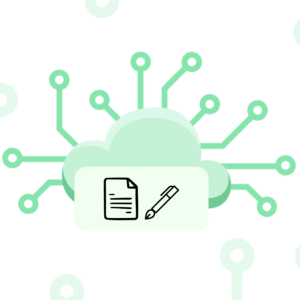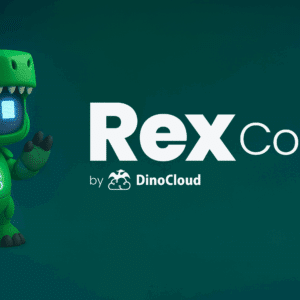
At DinoCloud, we’ve seen the profound impact of serverless computing. As a top cloud services firm, our partnership with AWS has allowed us to deliver cutting-edge, scalable, and cost-efficient solutions. These solutions push the limits of what’s achievable in the cloud.
The idea of serverless computing was once a distant dream. However, AWS Lambda’s launch in 2014 brought about a major shift. Now, AWS Serverless solutions are revolutionizing the industry. They enable businesses to create outstanding applications without the hassle of managing the infrastructure.
Key Takeaways
- Serverless computing enables event-driven, highly scalable architectures that can handle high-volume workloads with ease.
- AWS Serverless solutions offer a pay-as-you-go pricing model, ensuring businesses only pay for the resources they consume.
- Serverless computing eliminates the need for over-provisioning, leading to significant cost savings and better alignment of expenses with actual usage.
- AWS Lambda’s ability to automatically scale resources in response to demand optimizes resource utilization and delivers consistent performance.
- Companies leveraging AWS Serverless have reported improved user experience, reduced latency, and increased reliability.
Understanding AWS Serverless Solutions
In the realm of cloud computing, AWS Serverless solutions represent a cutting-edge, efficient method for deploying applications. They eliminate the need for server management, allowing developers to concentrate on their code. This approach ensures applications scale seamlessly and efficiently.
Defining AWS Serverless Solutions
AWS Serverless solutions, like AWS Lambda, are cloud services that manage the underlying infrastructure. This frees developers from the tasks of provisioning, scaling, and maintaining servers. Users can focus on writing and deploying their code, without the worry of operational complexities.
The Evolution of Serverless Computing
The evolution of serverless computing reflects the advancement of cloud technology. Initially, cloud computing required renting virtual space or hardware, posing challenges in scalability and resource management. AWS Lambda’s introduction in 2014 marked a pivotal shift, enabling scalable serverless computing without the need to manage servers.
Comparing AWS Serverless to Traditional Cloud Services
AWS Serverless solutions present notable benefits over traditional cloud services. The pay-as-you-go model ensures costs are directly tied to usage, resulting in substantial savings for businesses with varying demands. Additionally, AWS Serverless facilitates effortless scalability, allowing applications to adapt to traffic changes without manual intervention. Furthermore, AWS handles server maintenance and security updates, allowing developers to prioritize innovation.
Advantages of AWS Serverless: A Game-Changer in Cloud Computing
AWS Serverless revolutionizes cloud computing by providing a cost-efficient, scalable, and maintenance-free alternative. It meets the demands of modern software development, focusing on agility and operational efficiency.
The pay-as-you-go model of AWS Serverless allows businesses to only pay for the resources they use, avoiding waste during low-demand periods. This approach is further bolstered by automatic scalability, ensuring consistent performance across varying workloads without manual effort.
Additionally, the simplified nature of backend code development with AWS Serverless leads to enhanced quality and innovation. Developers can concentrate on the application’s core logic, not infrastructure management. This shift reduces overheads and operational costs, appealing to startups and established companies alike.
| Advantage | Benefit |
|---|---|
| Cost-Efficiency | Pay-as-you-go model and automatic scalability ensure businesses only pay for the resources they consume, avoiding wastage during off-peak times. |
| Scalability | Automatic scaling capabilities of AWS Serverless ensure consistent performance for variable workloads without manual intervention. |
| Operational Efficiency | Offloading infrastructure management tasks to the cloud provider reduces overheads and operational costs, enabling greater focus on core application development. |
| Agility | Simplified backend code development associated with AWS Serverless leads to better quality and more innovative features, accelerating time-to-market. |
The aws serverless advantages of cost-efficiency, scalability, operational efficiency, and agility redefine cloud computing. They transform how businesses approach software development and deployment.
Cost Analysis of AWS Serverless in Software Development
AWS Serverless has revolutionized cloud computing for software development teams, offering a cost-effective solution. Its pay-per-use pricing model allows businesses to manage their cloud expenses more efficiently. This approach ensures they only pay for the resources their applications use, not for idle servers.
Breaking Down the Costs of AWS Serverless
Understanding the cost structure of AWS Serverless, like AWS Lambda, is key. Costs are tied to the number of requests and the time each code execution takes, in 100ms increments. Memory allocation also affects costs. This model provides precise cost control, as businesses only pay for what they use, without paying for unused servers.
Comparing with Traditional Cloud Computing Models
Traditional cloud computing models often lead to over-provisioning, resulting in high costs during off-peak times. In contrast, AWS Serverless offers a more cost-effective solution. It aligns costs with actual usage, eliminating the need for forecasting and allowing for automatic scaling. This is particularly beneficial for applications with variable traffic.
Real-World Cost Efficiency Examples
A video-on-demand platform is a prime example of AWS Serverless’s cost efficiency. By using AWS Lambda and Amazon S3, the platform efficiently handled increased traffic and uploads. This serverless architecture allowed for dynamic resource allocation, scaling during peak times without the need for additional server capacity. This resulted in a significant reduction in operational costs.
| Metric | Value |
|---|---|
| Total period of time for which Provisioned Concurrency is enabled (seconds) | 28,800 seconds |
| Total Provisioned Concurrency amount (GB-s) | 4,320,000 GB-s |
| Monthly billable requests | 2,000,000 requests |
| Monthly request charges | $0.40 |
| Total compute duration (seconds) with Provisioned Concurrency enabled | 50,000 seconds |
| Total compute (GB-s) with Provisioned Concurrency enabled | 75,000 GB-s |
| Compute charges with Provisioned Concurrency enabled | $0.73 |
| Total compute (seconds) with Provisioned Concurrency disabled | 300,000 seconds |
| Total compute (GB-s) with Provisioned Concurrency disabled | 450,000 GB-s |
| Monthly billable compute GB-s with Provisioned Concurrency disabled | 50,000 GB-s |
| Monthly compute charges with Provisioned Concurrency disabled | $0.83 |
| Total monthly charges | $19.96 |
This table illustrates the cost efficiency of AWS Serverless, highlighting its advantages over traditional cloud computing. By aligning costs with actual usage, businesses can optimize their cloud spending and focus on delivering value to their customers.
Serverless Application Development: The Key to Scalability and Performance
AWS Serverless solutions, like AWS Lambda, bring notable performance benefits over traditional cloud services. They automatically manage computing resources, ensuring serverless functions are always prepared to serve requests. This eliminates the latency caused by server startup times. The stateless nature of these functions also boosts performance, handling each request independently for consistent response times under any load.
Analysing the Performance Benefits
Scalability is a key advantage of AWS Serverless. For instance, AWS Lambda can scale horizontally automatically, increasing function instances to meet demand. This ensures efficient use of resources, scaling up or down based on actual demand, not fixed thresholds. Such scalability is crucial for applications with unpredictable or cyclical usage patterns, allowing for cost-efficiency and performance optimization.
Scalability Features and Their Impact
A media company’s experience with AWS Serverless for its content delivery platform illustrates these benefits. They faced issues with server overload during peak times, leading to latency and potential downtime. Switching to AWS Serverless allowed them to dynamically scale their infrastructure, enhancing user experience and reducing costs. Similarly, an e-commerce website used AWS Serverless for order processing, efficiently managing volume fluctuations during sales periods.
Real-World Case Studies Highlighting Benefits
AWS Lambda stands out in serverless computing, offering a fully managed service that runs code without server setup. It promotes efficient computing. Microservices in serverless computing allow for applications to be built as loosely connected services, enhancing flexibility and resource use. Function as a Service (FaaS) enables the development and management of functionalities without infrastructure upkeep, significantly cutting operational costs.
| Case Study | Industry | Challenge | AWS Serverless Solution | Benefits |
|---|---|---|---|---|
| Media Company | Media | Spikes in server load during peak traffic, leading to increased latency and potential downtime | Implemented AWS Serverless for content delivery platform | Scaled infrastructure dynamically based on real-time demand, improved user experience, and optimized operational costs |
| Retail E-commerce Website | E-commerce | Challenges in handling fluctuations in order volume, especially during seasonal sales periods | Adopted AWS Serverless for order processing system | Efficiently handled changes in order volume, ensuring seamless user experience during peak sales |
Operational and Risk Management Benefits of AWS Serverless
Switching to AWS serverless solutions offers numerous operational benefits, significantly enhancing an organization’s efficiency and risk profile. A key advantage is the marked decrease in infrastructure management duties.
AWS Serverless shifts the responsibility for server provisioning, patching, and security updates to the cloud provider. This frees up resources for developing and improving applications. It allows organizations to concentrate on their core business goals, rather than being overwhelmed by infrastructure complexities.
The stateless nature of serverless functions boosts security and compliance. Each function’s execution is isolated, and data isn’t kept between invocations. This approach reduces the attack surface and minimizes data breach or compliance violation risks. It’s especially valuable for businesses in highly regulated sectors, where data privacy and security standards are strict.
AWS Serverless also enhances risk management. Its automatic scaling and self-healing capabilities ensure applications can manage sudden traffic spikes without manual intervention. This resilience prevents service disruptions and ensures high availability during peak times.
Real-world examples highlight the operational and risk management benefits of AWS Serverless. TV TOKYO, a Japanese media firm, cut technical preparation time for live events from a month to just a week using AWS Fargate. Economia, a Czech media house, gained agility and speed in testing new technologies and products with AWS Lambda across various scenarios.
By adopting the AWS Serverless model, organizations can streamline operations, improve security and compliance, and lower risk in their cloud infrastructure. This strategic move enables businesses to focus on innovation, deliver outstanding customer experiences, and lead in a fast-changing digital world.
Getting Started with AWS Serverless Development
The cloud computing landscape is evolving rapidly, with AWS Serverless solutions at the forefront. These solutions are transforming how developers create and deploy applications. By using these serverless frameworks, developers can simplify their processes and explore new possibilities in their projects.
Frameworks for Serverless Application Development
Developers have a plethora of AWS, open-source, and third-party web frameworks at their disposal. These frameworks make creating and deploying serverless applications easier. Some of the top choices include:
- AWS Serverless Application Model (AWS SAM) – An open-source framework for building serverless applications on AWS.
- AWS Cloud Development Kit (AWS CDK) – A software development framework for defining cloud infrastructure as code using familiar programming languages.
- Serverless Framework – An open-source, CLI-based tool for building and deploying serverless applications.
- Chalice – A Python-based framework for creating and deploying serverless applications on AWS.
- Arc.codes – A framework for building and deploying serverless web apps on AWS.
- Claudia.js – A tool for deploying Node.js microservices to AWS Lambda and API Gateway.
Continuous Integration and Continuous Delivery (CI/CD)
Implementing a robust CI/CD workflow is vital for managing and deploying serverless applications effectively. AWS Developer Tools, including AWS CodeCommit, CodePipeline, CodeBuild, CodeDeploy, and CodeArtifact, along with platforms like Stackery, automate the build, test, and deployment processes. This ensures faster and more reliable updates.
Monitoring and Logging in Serverless Applications
Effective monitoring and logging are crucial for the reliability and performance of serverless applications. AWS services like AWS X-Ray and Amazon CloudWatch, along with third-party tools such as AppDynamics, Dashbird, Datadog, Epsagon, Lumigo, and New Relic, offer comprehensive observability and real-time error tracking. These tools help developers quickly identify and resolve issues in serverless environments.
By utilizing these powerful AWS Serverless frameworks, CI/CD workflows, and monitoring solutions, developers can streamline their application development and deployment. This approach ensures scalability, cost-efficiency, and optimal performance for serverless projects.
Use Cases for AWS Serverless Applications
AWS Serverless solutions have transformed cloud computing, offering numerous use cases for various business needs. They enable scalable back-end services for web and mobile applications, real-time data processing, and IoT applications. This technology has significantly impacted the industry.
Developing back-end services for web and mobile applications is a key use case for AWS Serverless. With AWS Lambda, developers can create scalable and fault-tolerant APIs and microservices without managing infrastructure. This lets teams focus on innovation, not server maintenance.
Real-time data processing is another prominent use case. Organizations need to quickly process large data volumes from IoT devices, applications, and marketing sources. AWS Serverless solutions, like AWS Lambda and Amazon Kinesis, support efficient data processing. This allows businesses to gain valuable insights and make timely decisions.
IoT applications benefit greatly from AWS Serverless. Developers can process and analyze sensor data from devices using AWS Lambda. This automates tasks and triggers actions based on events. It helps businesses create intelligent, responsive IoT solutions without the hassle of traditional infrastructure.
Serverless APIs and microservices are another area where AWS Serverless excels. Amazon API Gateway enables the creation of secure, scalable APIs that integrate with AWS services like AWS Lambda. This fosters agility, flexibility, and rapid software development.
AWS Serverless is ideal for automating tasks like backups, report generation, and data transformation. Using AWS Lambda and other services, businesses can manage these tasks without dedicated server management. This ensures reliable and cost-effective operations.
Lastly, AWS Serverless is changing how we develop chatbots and conversational interfaces. By combining AWS Lambda with Amazon Lex and Amazon Polly, developers can create intelligent chatbots. These chatbots provide personalized experiences and enhance customer interactions in real-time.
In conclusion, AWS Serverless solutions offer unmatched versatility, empowering businesses to explore various use cases. They bring agility, scalability, and cost-efficiency to cloud computing strategies. As serverless computing demand grows, embracing these solutions will give organizations a competitive edge in the digital landscape.
Conclusion
AWS serverless computing stands at the vanguard of the cloud computing evolution. It offers a cost-effective, scalable, and operationally efficient approach to the future. By adopting AWS serverless, companies can concentrate on coding rather than infrastructure management. This enables them to quicken development cycles and deliver outstanding applications to their customers.
The advantages of AWS serverless go beyond mere cost savings and scalability. This advanced technology boosts operational efficiency, minimizes the risk of vendor lock-in, and ensures strong security for data and functions. With the surge in microservices architectures and the escalating need for event-driven, highly available applications, AWS serverless computing has emerged as crucial for businesses aiming to lead in the dynamic cloud computing sphere.
Looking ahead, the ongoing advancements in AWS serverless solutions, alongside its broadening use across sectors, underscore its critical role in defining the future of cloud computing. Whether you’re a startup looking to cut costs or an enterprise aiming to streamline development and boost scalability, embracing AWS serverless can drive your business into the next wave of cloud-based innovation.
FAQ
What are AWS Serverless solutions?
AWS Serverless solutions represent a new approach to cloud computing. They let the service provider, like AWS, handle server management. This setup lets developers focus on their code, eliminating the need to manage servers. It enables applications to scale effortlessly and efficiently.
How does AWS Serverless differ from traditional cloud services?
AWS Serverless solutions stand out from traditional cloud services. They offer a pay-as-you-go model that aligns costs with usage, leading to significant savings for businesses with fluctuating demands. They also provide effortless scalability, allowing applications to scale up or down without manual intervention. Furthermore, AWS manages server maintenance and security updates, freeing developers to focus on innovation.
What are the key cost components of AWS Serverless solutions?
The main cost components of AWS Serverless solutions, like AWS Lambda, include the number of requests and the duration of code execution, measured in 100ms increments. Additionally, AWS charges based on the memory allocated to the function. This model allows for precise cost control, as businesses only pay for the exact resources their applications consume, without the need to pay for idle server time.
How does the cost efficiency of AWS Serverless compare to traditional cloud computing?
Traditional cloud computing costs are driven by server provisioning, where businesses pay for server capacity, regardless of utilization. This often leads to over-provisioning for peak times, resulting in higher costs during off-peak periods. In contrast, AWS Serverless’s pay-per-use model offers a more cost-effective solution, especially for applications with variable traffic. It eliminates the need for forecasting and allows for automatic scaling, directly aligning costs with actual usage.
What are the performance benefits of AWS Serverless solutions?
AWS Serverless solutions, such as AWS Lambda, offer significant performance benefits over traditional cloud services. They automatically manage computing resources, ensuring serverless functions are always ready to respond to requests without latency from server startup times. The stateless nature of serverless functions also contributes to their high performance, as each request is handled independently, providing consistent response times regardless of the load.
Source Links
- https://aws.amazon.com/blogs/training-and-certification/new-training-building-serverless-applications-on-aws-available-on-coursera-and-edx/
- https://docs.aws.amazon.com/whitepapers/latest/optimizing-enterprise-economics-with-serverless/understanding-serverless-architectures.html
- https://aws.amazon.com/training/classroom/developing-serverless-solutions-on-aws/
- https://aws.amazon.com/serverless/
- https://dinocloud.co/benefits-of-serverless-computing/



